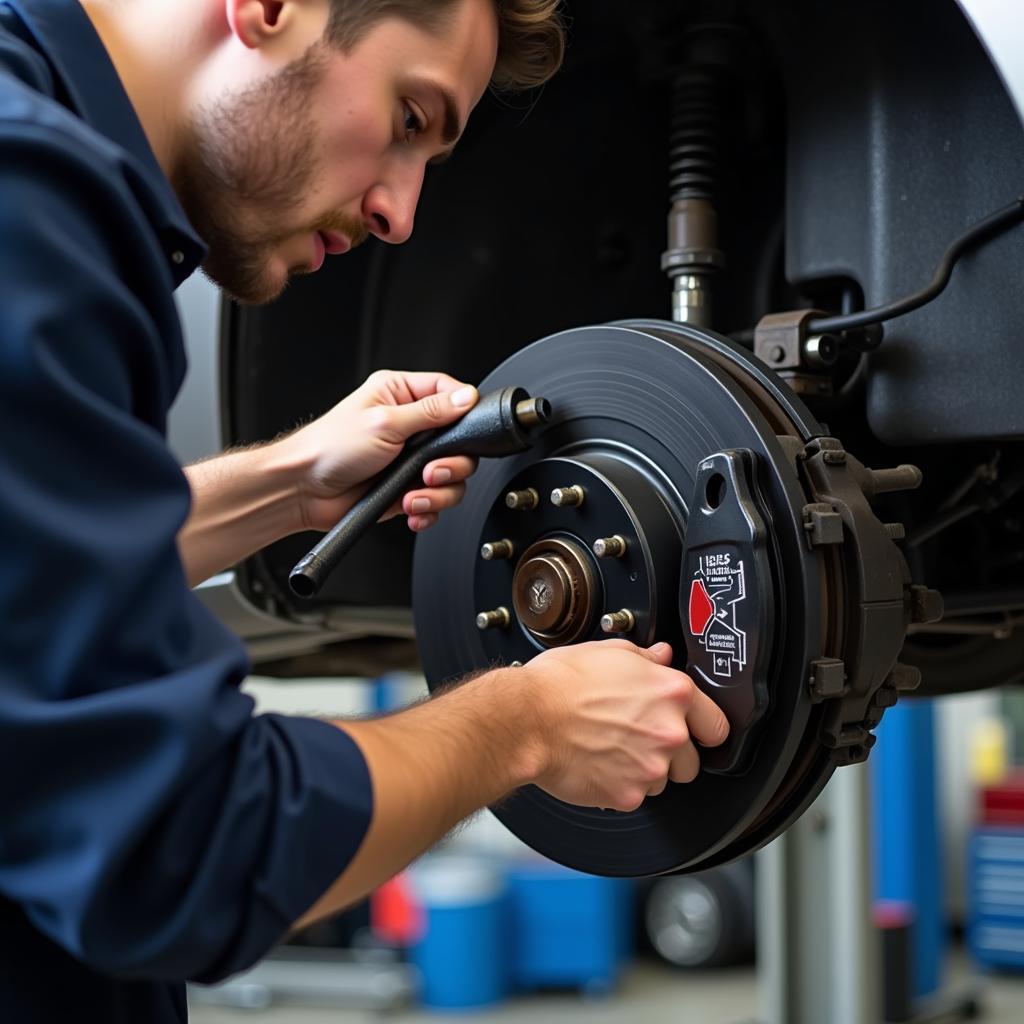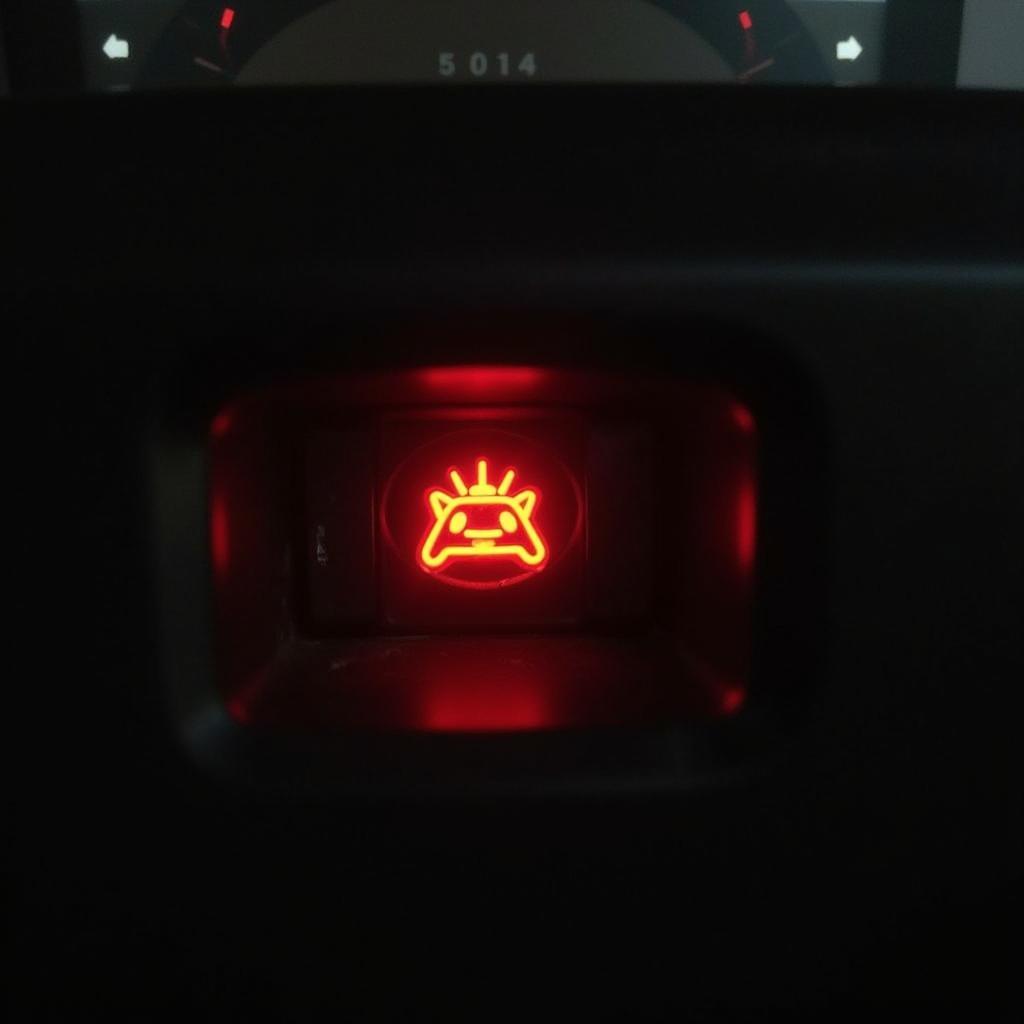The WA380-3 brake pressure warning light is a crucial safety feature in your vehicle. When it flashes, it signals a potential problem within your braking system that requires immediate attention. Ignoring this flashing light could lead to reduced braking performance and increase the risk of an accident. This comprehensive guide will delve into the common causes of a flashing WA380-3 brake pressure warning light and provide you with potential solutions.
Understanding the WA380-3 Brake Pressure Warning System
Before we explore the causes, it’s essential to understand how this system works. The WA380-3 system monitors the pressure within your vehicle’s hydraulic brake system. When you press the brake pedal, the system ensures that pressure is distributed evenly to all four wheels for optimal braking force.
If the system detects a drop in pressure or an imbalance, the WA380-3 warning light will flash, alerting you to the problem.
Common Causes of a Flashing WA380-3 Warning Light
There are several reasons why your WA380-3 brake pressure warning light might be flashing. These range from simple fixes to more complex issues requiring professional attention:
-
Low Brake Fluid Level: This is the most common cause. Brake fluid is the lifeblood of your braking system, and as your brake pads wear down, the fluid level naturally decreases.
-
Brake Fluid Leak: A leak anywhere in the brake lines, hoses, or calipers can lead to a significant drop in brake fluid pressure.
-
Wworn Brake Pads: As brake pads wear down, they require more brake fluid to function correctly. This can trigger the warning light, especially if the pads are worn beyond a safe limit.
-
Faulty Brake Pressure Sensor: The sensor itself may malfunction, sending incorrect signals to the vehicle’s computer and illuminating the warning light.
-
ABS Module Issues: While less common, problems with the Anti-lock Braking System (ABS) module can also trigger the WA380-3 warning light.
 Checking Brake Fluid Level
Checking Brake Fluid Level
Troubleshooting a Flashing WA380-3 Warning Light
If your WA380-3 warning light is flashing, it’s crucial to address the issue promptly. Here’s a step-by-step guide:
-
Check Your Brake Fluid Level: Park your vehicle on a level surface and locate the brake fluid reservoir. The reservoir is usually translucent, allowing you to see the fluid level. If the level is low, add the appropriate brake fluid to the “MAX” line.
-
Inspect for Leaks: Carefully examine the brake lines, hoses, and calipers for any signs of leakage. Look for wet spots or drips near these components. A brake fluid leak is a serious issue and requires immediate professional attention.
-
Check Brake Pad Wear: If your brake fluid level is fine and you don’t see any leaks, the next step is to check your brake pads. Worn brake pads can often trigger the WA380-3 warning light.
When to Seek Professional Help
If you’re uncomfortable performing these checks or if you’ve checked the common causes and the warning light persists, it’s crucial to seek professional help.
“Ignoring a flashing brake pressure warning light can be extremely dangerous,” says John Smith, a certified automotive technician with over 20 years of experience. ” It’s always better to err on the side of caution and have a professional diagnose the issue.”
A qualified mechanic can perform a thorough inspection, using diagnostic tools to pinpoint the exact cause of the problem and recommend the appropriate repairs.
Preventing Future WA380-3 Warning Lights
Proactive maintenance is key to preventing future issues with your brake system and avoiding a flashing WA380-3 warning light:
-
Regular Brake Fluid Flushes: Over time, brake fluid absorbs moisture, reducing its effectiveness. Most manufacturers recommend flushing your brake fluid every 2 years or as specified in your owner’s manual.
-
Timely Brake Pad Replacement: Don’t wait for your brake pads to wear down completely. Replace them as soon as they reach the minimum thickness specified by the manufacturer.
-
Annual Brake Inspections: Include a thorough brake inspection during your regular vehicle maintenance.
 Professional Brake System Inspection
Professional Brake System Inspection
Conclusion
A flashing WA380-3 brake pressure warning light is a serious issue that should never be ignored. By understanding the potential causes, you can take the appropriate steps to diagnose and address the problem promptly, ensuring your safety and the safety of others on the road. Regular maintenance and timely repairs are essential for a reliable and safe braking system.


